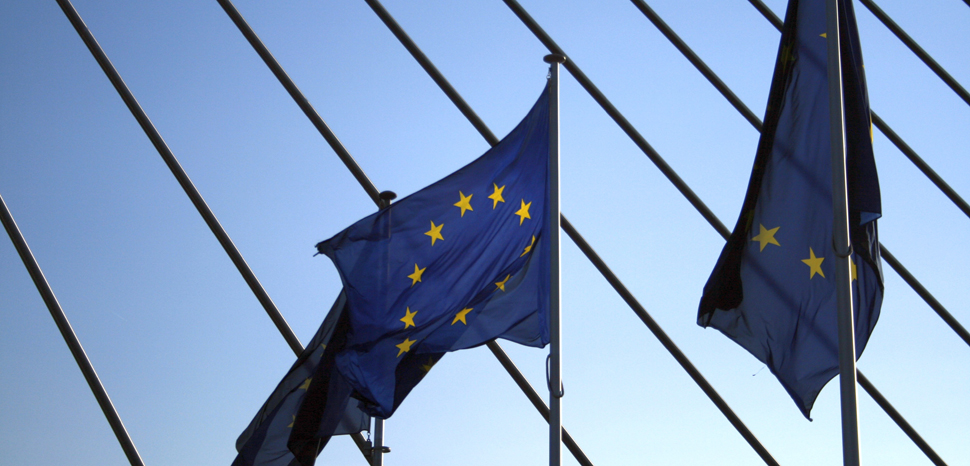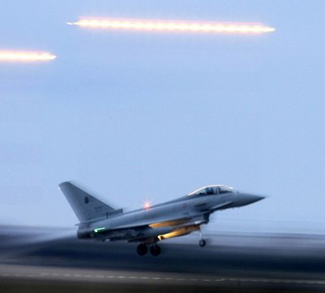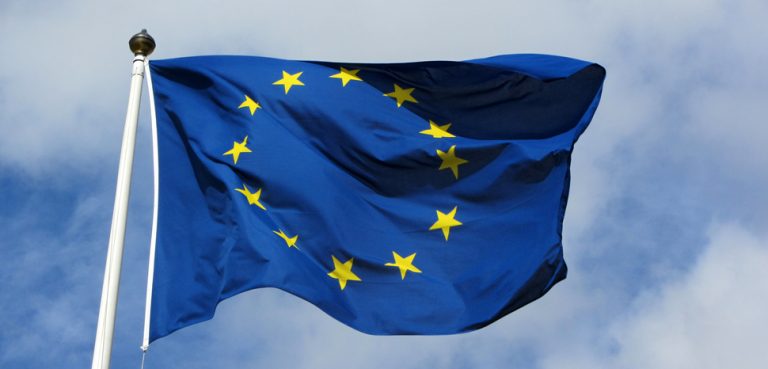The terror attack on Charlie Hebdo opened numerous debates between strategic and military experts, who argued extensively on the EU’s domestic and external intelligence operational capabilities. Some questioned the unholy cooperation on intelligence, while some called for a systematic restructuring of intelligence and security services institutions within the EU. Keeping in mind the immediate issue of foreign fighter returnees, which continues to engage intelligence and security establishments within the EU, demands to strengthen intelligence exchanges have reached an ever-higher pitch. The aforementioned debate is neither new nor unforeseen. With every successful terror attack, the experts’ pitch on effective intelligence cooperation continues to take on more importance. However, such demands for effective and efficient cooperation between intelligence agencies have drastically neglected the essence and doctrine of said institutions. This does not necessarily undermine the need for effective and timely intelligence cooperation, but rather points out the need for such institutions to maximize their operational capability within their area of operations. However, the EU over the past decade has adopted numerous measures to strengthen intelligence cooperation and inter-agency coordination. Sadly, in many cases this merely looks good on paper.
Understanding the EU’s Institutional Architecture
In an effort to overcome challenges in the field, the EU has employed new measures and increased operationally vital resources for intelligence analysis, cooperation, and inter-agency interaction. Within the EU, intelligence cooperation occurs at three different levels: law enforcement, internal security, foreign policy. Under EU architecture, intelligence assistance is predominantly received by security and foreign policy-centric institutions. This extensive interaction is made possible by many supporting institutions, such as the European Union External Action Service (EEAS) which principally focusses on EU-centric tasks. The responsibility for analyzing intelligence rests with the European Union Intelligence and Situation Centre (EUIntCen) which operates under defined jurisdiction, broadly exercising intelligence exchange with designated partners. It is a quasi-domestic intelligence agency which is also tasked with monitoring terror threats emanating inside the EU.
The responsibility to neutralize external threats rests with EU’s Military Staff Intelligence Directorate, which reinforces the Intelligence and Situation Centre while operating from a military standpoint. The joint reports published by the aforementioned institutions are released under the Single Intelligence Analysis Capacity (SIAC) framework. To provide real time geographical insight, the European Union Satellite Centre externally reinforces the aforementioned institutions on an as-needed basis and provides them with accurate imaginary intelligence.
Furthermore, the EU also hosts intelligence exchange between multiple law enforcement agencies. However, the exchange of information occurs in a limited capacity as the responsibility rests largely on the European Union Agency for Law Enforcement Cooperation (Europol), whose focus is dictated by the requirements of EU member nations rather than EU-centric activities as a whole.
Exchanges of information used to occur externally of the EU. They were brought under its jurisdiction by the Europol Convention before formally acknowledging and ratifying Europol as a law enforcement agency of the EU. Today, Europol is the principal agency for exchanging a variety of intelligence. Information is received through partnered international organizations and external nations. Within the context of internal security, the European Union is majorly benefitting from such cooperation even though it operates outside of EU-centric policies. The intersection of aforementioned cooperation and coordination rests at the Berne Club (where intelligence agencies gather/exchange information pertaining all threats to society), along with its derivative, the Counter Terrorism Group (CTG), which focusses on radical Islamic fundamentalists. Although cooperation is predominantly inter-agency, the CTG has access to the EU’s IntCen and frequently updates key policymakers. The CTG has a membership of all 28 EU member nations plus Norway and Switzerland.
To summarize, the EU’s intelligence exchange network has exponentially widened in the past decade. Intelligence cooperation with respect to EU-centric policies has resulted in the formation of quasi-intelligence institutions. The EU is equipped with a dedicated law enforcement agency capable of assessing and analyzing real-time intelligence, reinforced by security institutions with a wide operational capability. Amidst controversies and limited institutional insight, this area remains unharnessed and systematically ignored by policymakers and academics.
Roadblocks in Intelligence Cooperation
The extensive changes and structural enhancement of security and intelligence infrastructure highlights the EU’s travel over rough seas. Furthermore, the challenges faced by the EU during intelligence exchange are extensive and will continue to hinder potential cooperation.
The main challenges are outlined below:
Intelligence sharing is preferential/need based. Nations establish joint intelligence exchange centers or share necessary intelligence with partner countries on a strictly as-needed basis. The need to provide real-time intelligence is a rationale which remains absent within regional or powerful economies. The fear of losing carefully nurtured confidential informants and access to methods employed to gather information, or deception, remains high.
Then there is the notion of zero-sum game. Some intelligence is more useful and worthier of being harnessed, limiting the flow of information to selected actors. This is admissible in cases with foreign intelligence when the information carries political weight worthy enough for a trade. Alternatively, putting aside the powerful economies which will be ready to exchange intelligence, and will be more than keen to assist in formulating a dedicated intelligence exchange mechanism for the EU, member nations from underdeveloped economies, to some extent, will not deem intelligence exchange to be in their interest.
Powerful economies are resourceful. Member nations do not only share intelligence on a preferential basis, but also have varying access to crucial resources. International intelligence and security establishments have mastered the art of providing greater access to powerful economies. Inviting powerful nations to participate in intelligence cooperation institutions by providing them lucrative incentives is not a new phenomenon.
The immediate years following the establishment of EU IntCen is a perfect example as to how powerful economies were given extensive access, which had control over shaping the cooperation mechanism of the institution. The difference between powerful and evolving economies eventually contributes to an aura of inferiority among the latter.
Bureaucratic interference. The bureaucracies of many nations have vested interests which often produce clashes and disagreements. This could principally be due to the difference in institutions’ operational mechanisms between law enforcement institutions and intelligence services (which further complicates joint task force operations against terrorism).
Most importantly, the ambition demonstrated by policymakers and political leaders does not meet the reality. For example, the ambition to reinforce and strengthen Europol’s ability to counter terrorism in the EU has never been realized as no intelligence and/or security institution is keen to cooperate and coordinate with a law enforcement agency.
Inadequate, ineffective, and inefficient cooperation architecture. Intelligence cooperation occurs between multiple agencies using dedicated liaison offices. The task of such dedicated offices is to coordinate with stakeholders for a smooth and timely flow of information. To ensure such a transition, trust plays an important role.
Working in joint professional environments will allow agencies to interact with each other more frequently, enabling actors to exchange operational mechanisms. However, in the light of previous unsuccessful attempts made by policymakers and political leadership to engage NATO with the EU immediately after the end of the Cold War, the absence of literature on joint-agency interaction further increases the complexity of the task.
Furthermore, there are limited technical security centric institutions which could enable the exchange of information and analysis at the same time. Although the EU continues to try and make this a reality, the impact for intelligence cooperation remains a matter of dispute.
An EU Dedicated Intelligence Agency?
Despite the European Union’s extensive efforts to strengthen intelligence cooperation since its establishment 15 years ago, the need for a dedicated FBI or CIA styled organization remains absent from discussions surrounding a dedicated intelligence agency. After the Madrid bombing of 2004, many member nations agreed to establish a CIA styled external intelligence agency.
Policymakers must note that, the main challenge of establishing a dedicated intelligence agency will come principally from member nation’s own intelligence institutions, as they themselves have weak operational architecture. With small member nations (equipped with limited resources) more inclined toward formulating a dedicated intelligence institution, the chances of success remain dim.
Furthermore, it remains unclear what particular challenges experts and member nations are keen on addressing. The European Union does not have a shortage of law enforcement officers, technicians, and intelligence analysts, but they extensively lack in inter-agency cooperation and coordination.
Conclusion
The author does not recommend policymakers formulate a new intelligence agency, especially to overcome challenges faced by previously established institutions. To begin with, the EU IntCen already operates with a quasi-intelligence architecture which policymakers must harness, maximize, and strengthen.
This is not to negate the pressing need of intelligence cooperation. Rather, policymakers should relocate available resources to establish a concrete cooperation policy. As a matter of fact, there are numerous unharnessed resources which are currently at the disposal of policymakers. However, in the light of Brexit and the EU migrant crisis, policymakers will be forced to employ more than just motivation to bring EU member nations to the table.
To get things started, the author advises that policymakers focus their attention on the following suggestions:
To begin with, the intelligence mechanism within the EU, and its possible future expansion, should not be exclusively focused on domestic intelligence architecture per se (for policymakers keen to establish an FBI styled intelligence institution). Policymakers must keep in mind that the European Union system comprises of a non-traditional intelligence ecosystem, which not only supports its needs but also fulfils the needs of individual member nations, which is an operational mechanism beyond the traditional boundaries of any intelligence system. Policymakers must ensure that intelligence institutions are used principally to exchange and analyze threats rather than fulfil the EU’s foreign policy objectives. This dedicated institution, if established, could provide a platform for policymakers and experts in varying fields to interact, causing certain discomfort within conservative political leadership.
Policymakers must not seek solace in a new intelligence establishment, but rather focus on enhancing and maximizing multilateral and bilateral partnerships in intelligence and security domains. To counter terrorism, information must be channeled from satellite centers, to intelligence analysis command centers, and to multilateral establishments. Policymakers, under no circumstances, should undermine the intelligence analysis and cooperation capability of the EU, and should not compare it with preexisting national institutions.
Policymakers have access to many unharnessed and unexplored resources, which should be adequately and cautiously relocated to necessary intelligence institutions irrespective of need or situation. One such example is the presence of more than one hundred staffers in developing and underdeveloped economies. These officers are either housed in trade departments or provide humanitarian assistance to relevant countries. A handful of them have experience in security institutions and even if they do, intelligence institutions within the EU have no formal division to incorporate their insight. The author again asserts policymakers to focus on strengthening IntCen’s ability to interact with security and intelligence analysts within EU offices established all over the globe in an effort to streamline the flow of real-time information.
Furthermore, policymakers must strengthen ‘cushioned’ infrastructure. This would pave the way for intelligence officers who are keen on gaining rapid experience using multilateral cooperation. IntCen also houses various representatives from member states and provides them necessary training. This training can be harnessed by creating a ‘train the trainers program’ whose focus will be to train departmental instructors in operating national intelligence systems, who would then train analysts preparing to enter various EU intelligence services.
It is important to note that numerous critical intelligence exchanges occur between the upper echelons of military and political leadership within the EEAS. The author recommends a bottom-to-top flow of communication which would enable intelligence analysts and strategic leadership to communicate frequently, which will provide them with an opportunity to assess the threat from multiple viewpoints. Also, policymakers must advocate common security and European interests between stakeholders in an effort to smoothen cooperation between multiple partners and responsible institutions.
The opinions, beliefs, and viewpoints expressed by the authors are theirs alone and don’t reflect the official position of Geopoliticalmonitor.com or any other institution.




